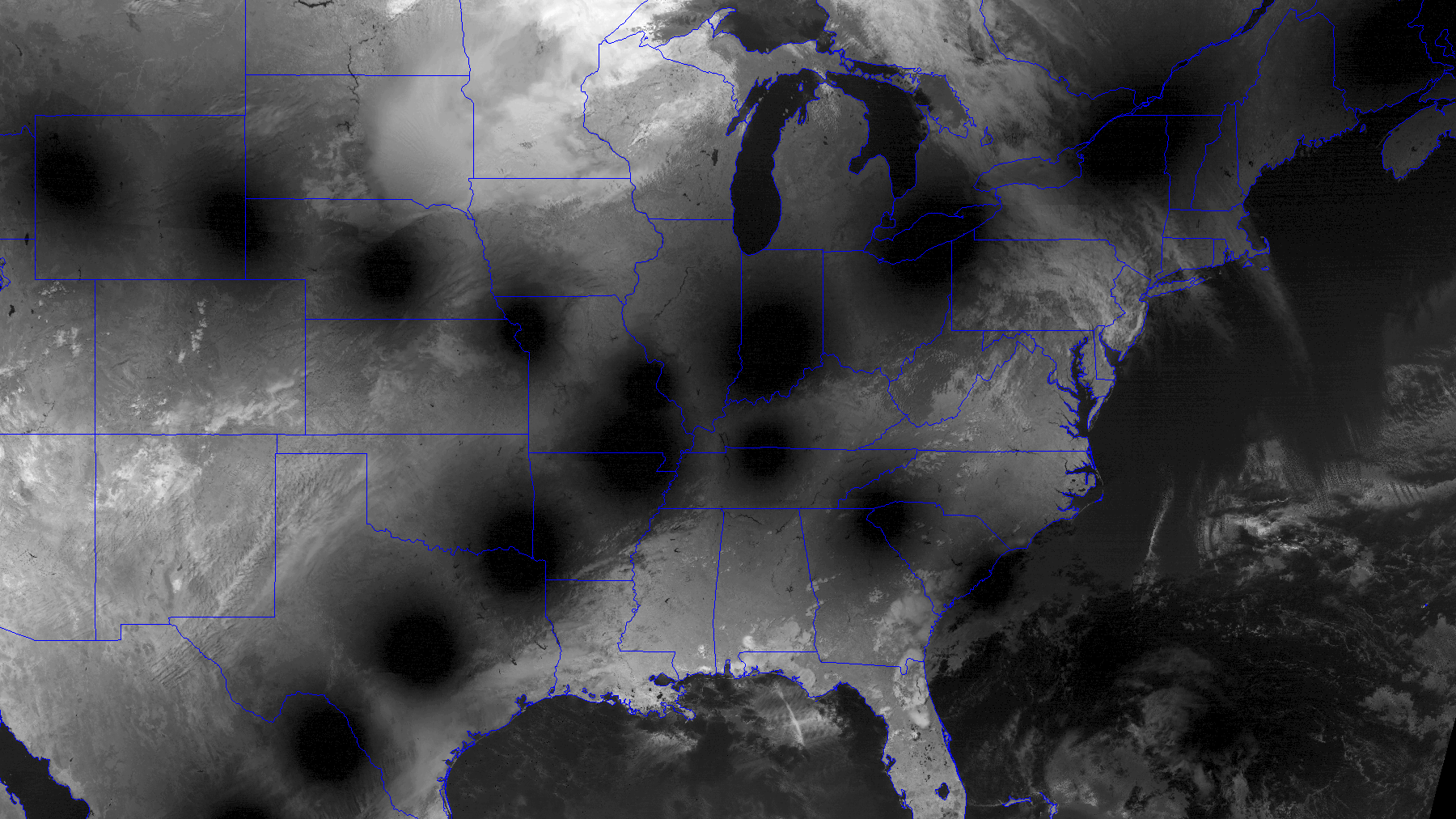
North America has experienced two transcontinental total solar eclipses within the last seven years, and these satellite images compare the crisscrossing paths of totality.
In 2017, a total solar eclipse moved from northwest regions to southeast areas, sweeping from Oregon to South Carolina and casting a shadow across 14 U.S. states coast-to-coast for the first time in 99 years. Then, just about two weeks ago, on April 8, 2024, another total solar eclipse traveled from the Pacific to the Atlantic, but this time moved southwest to northeast.
Incredibly, the National Oceanic and Atmospheric Administration's (NOAA) GOES-16 satellite tracked both total solar eclipses from space, documenting the location of the moon's shadow cast upon Earth in 5- to 10-minute intervals. Recent composite images compare the two solar eclipses and their nearly opposite paths of totality — the brief period of time during which the moon completely covers the face of the sun — that swept across North America.
Related: 14 of the best total solar eclipse 2024 photos from our readers
"The size of the moon's shadow on the Earth during the total solar eclipses were very different between 2017 and 2024," officials said in a statement.
The images comprise multiple snapshots of the moon's shadow as fell across different locations along the path of totality. An overlay of images taken during the two solar eclipses really emphasizes how the paths of totality differed. Satellite imagery was also used to create videos of each solar eclipse, along with a slider image that allows viewers to toggle between composite photos and compare differences observed in the size, duration and darkness of the moon's shadow between each respective eclipse.
The total solar eclipse in 2017 was visible from within a narrow corridor across Oregon, Idaho, Wyoming, Montana, Nebraska, Iowa, Kansas, Missouri, Illinois, Kentucky, Tennessee, Georgia, North Carolina and South Carolina. By comparison, the April 8 total solar eclipse stretched across Mexico, Texas, Oklahoma, Arkansas, Missouri, Illinois, Kentucky, Tennessee, Michigan, Indiana, Ohio, Pennsylvania, New York, Vermont, New Hampshire and Maine, culminating in southeastern Canada.
There were other notable differences, too, including the maximum length of totality, which lasted about 2 minutes and 40 seconds in 2017, but up to 4 minutes 28 seconds in 2024. The width of the path of totality was also vastly different between the two solar eclipses, spanning only 70 miles (113 kilometers) in 2017 compared to a whopping 115 miles (185 km) in 2024. The latter is due to the sun approaching solar maximum later this year.







